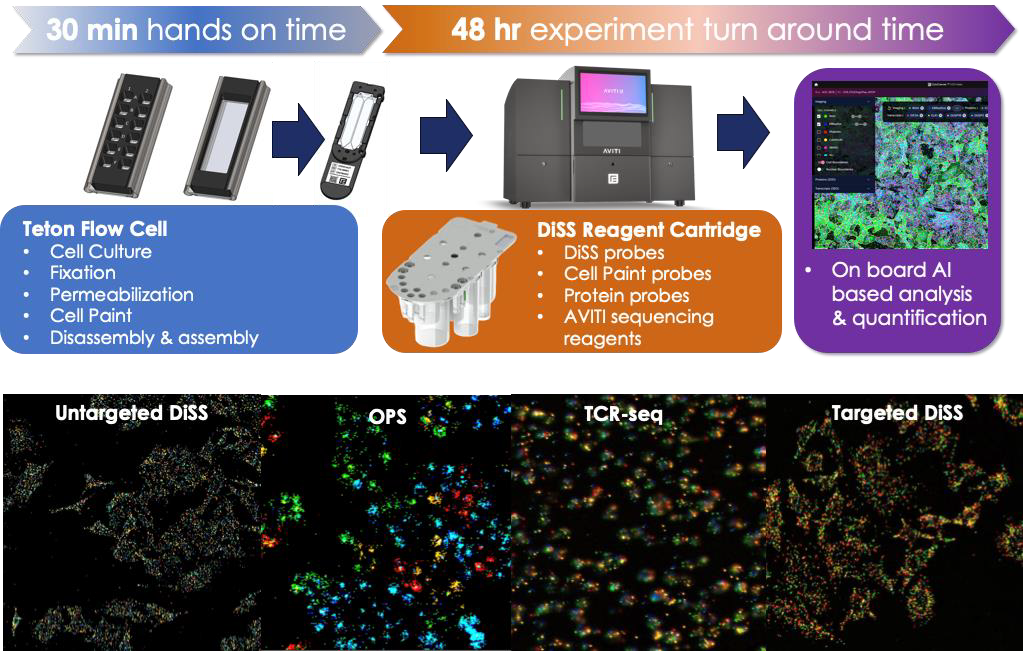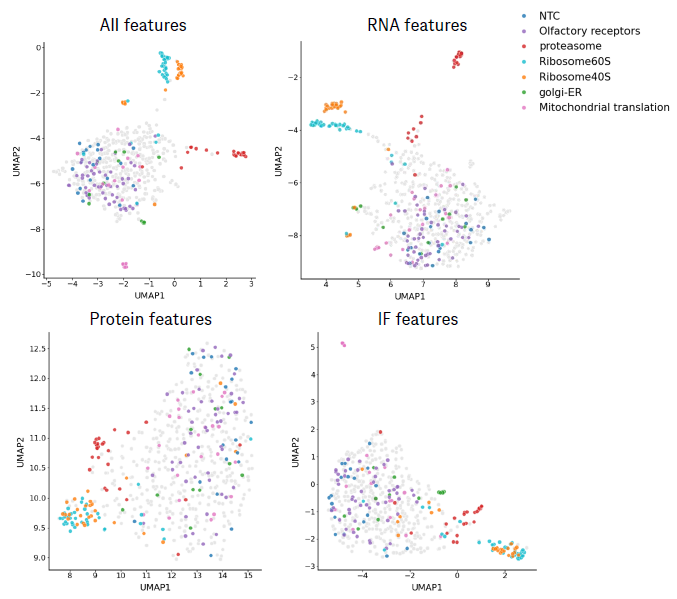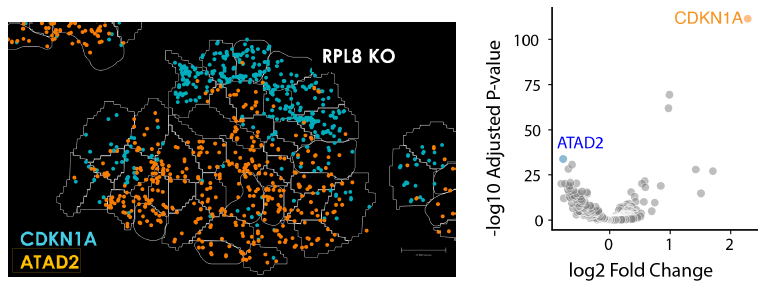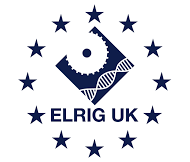This article and associated images are based on a poster originally authored by Avtar Singh, Daniel Honigfort, Takamasa Kudo, Mariam Dawood, Connor Thompson, A. Chuong, Paula Coelho, Orit Rozenblatt-Rosen and Mike Previte and presented at ELRIG Drug Discovery 2025 in affiliation with Genentech Research and Early Development (gRED) and Element Biosciences.
This poster is being hosted on this website in its raw form, without modifications. It has not undergone peer review but has been reviewed to meet AZoNetwork's editorial quality standards. The information contained is for informational purposes only and should not be considered validated by independent peer assessment.

Optical pooled screens

Figure 1. Optical pooled screens and PerturbView. a) Optical pooled screens (OPS) use targeted in situ sequencing of perturbations to link phenotypes and genotypes from a pooled library, making it practical to perform genome-wide imaging screens. b) PerturbView uses in vitro transcription to substantially amplify ISS signal, enabling screens in a wide variety of model systems with highly multiplexed phenotypic readouts. c) Currently, it is fairly laborious to perform OPS experiments and challenging to integrate multimodal readouts with ISS. Image Credit: Image courtesy of Avtar Singh et al., in partnership with ELRIG (UK) Ltd.
Multimodal profiling with AVITI24

Figure 2. Cytoprofiling on Element AVITI24. The AVITI24 platform enables the simultaneous detection of high-plex protein expression, morphological analysis using Cell Paint, and DiSS of reads exceeding 100 bases. This approach supports both untargeted total transcriptome analysis and targeted probe panels designed for specific applications, including Optical Pooled Screening (OPS), T-cell and B-cell receptor sequencing, and the analysis of specific genes of interest. Image Credit: Image courtesy of Avtar Singh et al., in partnership with ELRIG (UK) Ltd.
A highly multiplexed optical screen in breast cancer cells

Figure 3. A 500-gene screen leveraging morphological, RNA, and protein readouts. a) Schematic of the screening workflow and table summarizing the phenotypic panel. b) Example images from the screen. c) The screen sampled 490 cells/guide and 2074 cells/gene (median). d) Most cells captured ~900 RNA counts and ~70 protein counts across 350 RNA and 50 protein markers. Image Credit: Image courtesy of Avtar Singh et al., in partnership with ELRIG (UK) Ltd.
Validation of phenotypic readouts with control perturbations

Figure 4. Morphological, RNA, and protein readouts perform as expected for control perturbations. a) CALR KO is the top hit for calreticulin immunofluorescence (endoplasmic reticulum channel for Cell Painting). b) MPRL genes are the top hits for the 16S mitochondrial marker. c) Protein and RNA levels of AKT1 show concordance across different perturbations. d) For 19/30 RNA markers, the corresponding gene is among the top three down hits. Image Credit: Image courtesy of Avtar Singh et al., in partnership with ELRIG (UK) Ltd.
High-content morphological profiling

Figure 5. Cytoprofiling on Element AVITI24. Phenotypic embeddings of perturbations using all features, morphology, RNA, or protein. Image Credit: Image courtesy of Avtar Singh et al., in partnership with ELRIG (UK) Ltd.

Figure 6. Visualization of ribosomal gene RPL8 perturbation impact on RNA. Perturbation of ribosomal gene RPL8 dramatically upregulates CDKN1A and downregulates ATAD2. Image Credit: Image courtesy of Avtar Singh et al., in partnership with ELRIG (UK) Ltd.
Conclusions and next steps
- The team completed a fully-automated 500-gene optical pooled screen with highly multiplexed and multimodal phenotypic panels, validated the performance of individual markers, and demonstrated recovery of canonical biology using image-based profiling.
- They aim to perform genome-wide imaging screens with rich phenotypic readouts across a variety of cell types to better understand disease progression and identify novel targets
About Element Biosciences
Element Biosciences is a multi-disciplinary startup focused on innovating genetic analysis tools for the research and diagnostic markets. Founded in 2017, our headquarters is located in San Diego, California, with additional operations located in the San Francisco Bay area.
Element Biosciences are developing a modular and high-performing DNA sequencing platform that will deliver high quality data, workflow flexibility and make next-generation sequencing technology more accessible.
About ELRIG (UK) Ltd.
The European Laboratory Research & Innovation Group (ELRIG) is a leading European not-for-profit organization that exists to provide outstanding scientific content to the life science community. The foundation of the organization is based on the use and application of automation, robotics and instrumentation in life science laboratories, but over time, we have evolved to respond to the needs of biopharma by developing scientific programmes that focus on cutting-edge research areas that have the potential to revolutionize drug discovery.
Comprised of a global community of over 12,000 life science professionals, participating in our events, whether it be at one of our scientific conferences or one of our networking meetings, will enable any of our community to exchange information, within disciplines and across academic and biopharmaceutical organizations, on an open access basis, as all our events are free-of-charge to attend!
Our values
Our values are to always ensure the highest quality of content and that content will be made readily accessible to all, and that we will always be an inclusive organization, serving a diverse scientific network. In addition, ELRIG will always be a volunteer-led organization, run by and for the life sciences community, on a not-for-profit basis.
Our purpose
ELRIG is a company whose purpose is to bring the life science and drug discovery communities together to learn, share, connect, innovate and collaborate, on an open access basis. We achieve this through the provision of world class conferences, networking events, webinars and digital content.
Sponsored Content Policy: News-Medical.net publishes articles and related content that may be derived from sources where we have existing commercial relationships, provided such content adds value to the core editorial ethos of News-Medical.Net which is to educate and inform site visitors interested in medical research, science, medical devices and treatments.
Last Updated: Nov 13, 2025